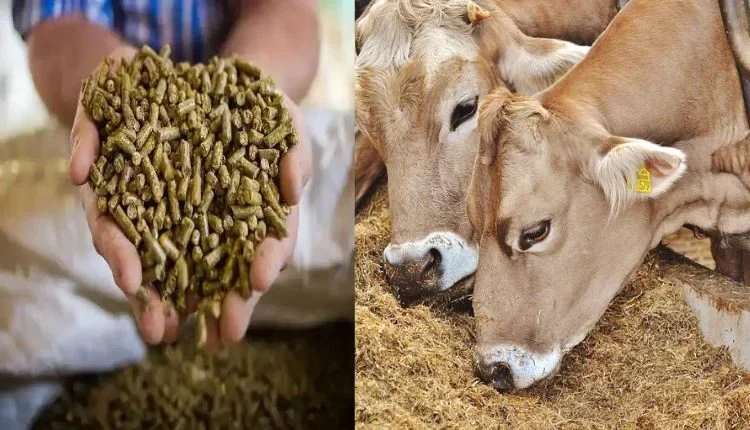Weeds harm animals: Green fodder is very nutritious for animals and quality meat and milk is obtained from it, but weeds mixed with green fodder not only affect the taste and nutrition of milk and meat, but due to this, animals can also suffer from many diseases. Some weeds have high amounts of alkaloids, tannins, oxalate glucosite or nitrate, which can prove to be dangerous for animals.
It is important that animals are given weed-free green fodder. Animal keepers should know what effect eating weed-containing fodder can have on animals.
Harm to animals from fodder weeds
ICAR has given information about some weeds, the consumption of which can have a negative effect on animals. Let us know which weeds are harmful for the health of animals:
The leaves of Lantana (Lantana camara) contain a poisonous chemical called lantredin, which can cause sensitivity to bright light in animals or can also cause jaundice.
If animals come in contact with carrotgrass (Parthenium hystemphorus), they may be at risk of itching and swelling of the skin. Due to this, animals may have allergy problems.
Cocklebur or small dhatura or Xanthium species contains a poisonous glycoside called carboxyatractyloside. The seeds as well as other parts of this plant are poisonous. It has a more fatal effect on small animals. On eating it, the liver is greatly affected by the poisonous chemical. The liver starts melting rapidly, which can also cause jaundice. Due to the poisonous chemical, animals also get chronic hepatitis. Other pathological symptoms may also be seen, including gastroenteritis.
Ageratum species
Ageratum species are found in large quantities in the Himalayan Nilgiri areas. These weeds are also harmful to animals.
Puncturevine (Tribulus terrestris) is a weed that grows in dry land. Its consumption causes sensitivity to bright light in sheep. In addition, the thorny fruits cause wounds in the hooves of grazing animals. Its consumption can also cause stomach problems in animals.
The thorny fruits of Xanthium stramarium, Achyranthus aspera, Saccharus setigerus, Cirrus arvense and Saccharus insertus stick to the mouth, tail and body of animals and irritate them.
Halogeton weed is found in arid and semi-arid areas. It contains high amount of oxalate.
Weeds of Astragalus and Oxytropis species spread rapidly in Rajasthan, which are poisonous for sheep and goats. Eating it can cause abortion in sheep and other animals. Such weeds contain the poisonous alkaloid swainsonine.
Leafy spurge (Euphorbia esula) can cause diarrhea and weakness in animals and is also fatal to sheep.
Crotolaria is fatal to chicks. Sweetclover (Melilotus alba) contains a dicumarin, which acts as an antiblood-coagulant in animals.
Effect of weeds on fiber production
Apart from sheep, wool is also obtained from goat and yak. ‘Pashmina’, considered to be the most famous fiber in the world, is obtained from pashmina goats found in Kashmir and Tibet. Tribulus terrestris, Cenchrus ciliaris, Xanthium speciosa weeds reduce the quality of fiber produced by animals.
Management of weeds in animal fibres
Tribulus terrestris, Cenchrus ciliaris, Xanthium speciosa – These reduce the quality of animal fibres. Therefore, first of all, grazing of animals should be avoided in areas where these types of plants are grown.
Avoid grazing of fibre producing animals in areas where weeds are present. If the thorny parts of weeds get stuck to the fibres of the animals, then remove them immediately. For this, it is important not to be careless in monitoring the animals. The fibres which have been affected by weeds should be removed as soon as possible, so that further fibre production is not affected.
Weed management during fodder production
Weed management in the pasture should be started even before growing the fodder crop. Actually, these are a serious problem for pastures, so it is necessary to eliminate them beforehand. Especially perennial broad leaves and grasses need to be managed before planting fodder crops. In addition, biennial weeds should be eliminated before planting the fodder crop, as they will continue to grow for many years if not removed before sowing the fodder crop seeds.
Measures for weed control
Proper preparation of seed beds
Proper fertilization
Planting or sowing at the right time
Planting at high density
Right seeding rate
Selection of good quality seeds
Use of chemical and biological weed control methods.
Contact us- If farmers want to share any valuable information or experiences related to farming, they can connect with us via phone or whatsApp at 9599273766 or you can write to us at [email protected]. Through Kisan of India, we will convey your message to the people, because we believe that if the farmers are advanced then the country is happy.
You can connect with Kisan of India on Facebook, Twitter, and WhatsApp and Subscribe to our YouTube channel.



